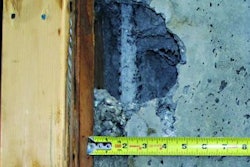WASHINTON, D.C. - The NAIOP Research Foundation has made individual state reports available that detail the state's data for commercial construction spending, employment and personal earnings in a 2009 vs. 2007 comparison.
The reports, for all states where NAIOP has a chapter, are available through an interactive online map: http://www.naiop.org/governmentaffairs/2010statereports/CREEconomicImpact.cfm.
"This report demonstrates the significant financial impact that commercial development and construction has on the state and national economies, and it reconfirms that a healthy real estate economy is vital to a prosperous U.S. economy," said Thomas J. Bisacquino, NAIOP president and CEO.
Report data is from the recently issued "The Contribution of Office, Industrial and Retail Development and Construction to the U.S. Economy," a report authored by Dr. Stephen S. Fuller, director of the Center for Regional Analysis at George Mason University, and funded by the NAIOP Research Foundation.
National Outlook
Commercial real estate development and construction is a perpetual and valuable economic engine, with spending and directly related outlays generating a significant financial impact and helping to counter the recessionary forces that have undermined the economy's performance since December 2007.
The compounded economic impact of commercial development and construction spending reached $288 billion in 2009, as follows:
- $148.6 billion in hard costs (actual construction costs)
- $139.4 billion in soft costs (architecture, engineering, marketing, legal, management), site development and tenant improvements
- An additional $2.52 billion were spent on building operations (maintenance, repair, custodial services, utilities and management)
Development and construction spending declined in 2009 due to the recession's economic contraction, yet it still generated an overall positive contribution to the U.S. economy. Direct outlays for construction spending for office, industrial, warehouse and retail totaled $46.6 billion, down 48 percent from 2007. And although an additional 264.6 million square feet of building space was added to the inventory, it represents a decrease of 68.5 percent compared to 2007.
National commercial construction spending, employment and personal earnings in a 2009 vs. 2007 comparison:
| Year | 2009 | 2007 |
| Commercial Construction Spending Totals | $288 billion | $549 billion |
| Employment Totals | 2.4 million jobs | 4.89 million jobs |
| Personal Earnings Totals | $89.1 billion | $170.1 billion |
Report data shows that building (both commercial and residential) and non-building (roads, bridges, etc.) construction spending in 2009 totaled $908 billion and accounted for 6.4 percent of the GDP, well off its high in 2007 when construction spending totaled $1.16 trillion and accounted directly for 8.5 percent of the GDP.
About the Report
This report enables the commercial real estate industry to quantify the numbers that demonstrate its considerable and sustained contribution to the U.S. economy. With this data, public and state and local governments can learn the ways that commercial development makes a positive and lasting contribution to their communities, including:
- Supporting the creation of jobs;
- Generating personal earnings, and;
- Promoting new spending activity across the breadth of the economy.
The report was produced using data provided by the Bureau of Economic Analysis, U.S. Department of Commerce, U.S. Census Bureau, McGraw Hill Construction and a NAIOP member survey. The NAIOP Research Foundation published two previous editions of this report in 2006 and 2008.
To access a copy of the report, please contact Kathryn Hamilton, NAIOP vice president for marketing and communications, at (703) 904-7100 or [email protected].



















